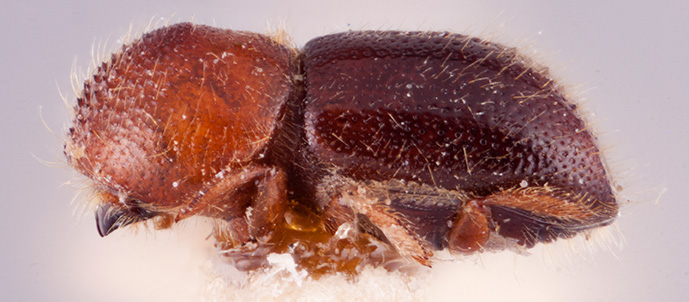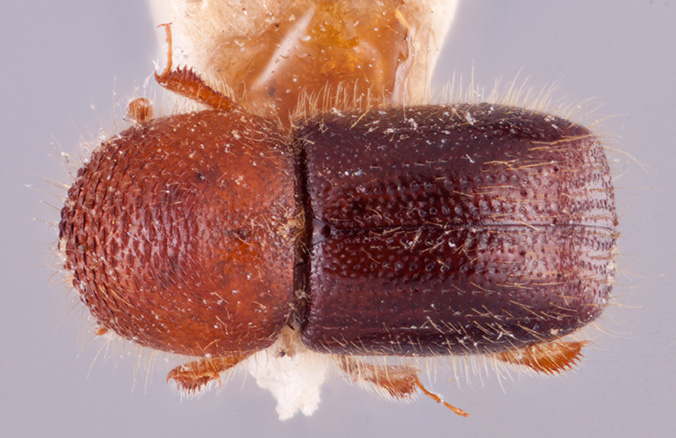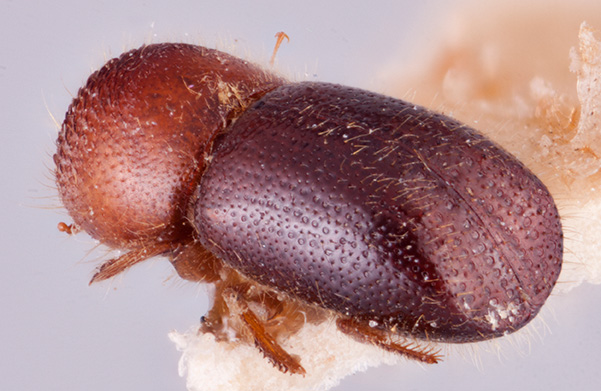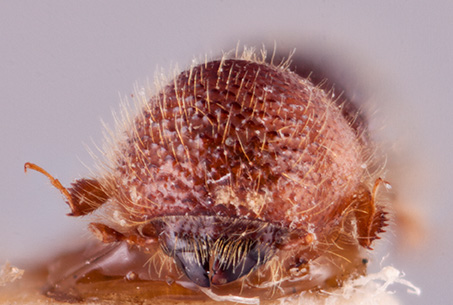Anisandrus mussooriensis
|
Anisandrus mussooriensis cotype lateral; R.K. Osborn |
|
Anisandrus mussooriensis cotype dorsal; R.K. Osborn |
|
Anisandrus mussooriensis cotype declivity; R.K. Osborn |
|
Anisandrus mussooriensis cotype frontal; R.K. Osborn |
Taxonomic history
Xyleborus mussooriensis Eggers, 1930: 179.
Cyclorhipidion mussooriense (Eggers): Maiti and Saha, 2004: 116.
Anisandrus mussooriensis (Eggers): Beaver and Liu, 2018: 538.
Diagnosis
3.0−3.25 mm long (mean = 3.1 mm; n = 5); 2.30−2.33 times as long as wide. This species can be distinguished by the mesonotal mycangial tuftmycangial tuft:
tuft of setae that denotes the mycangia exterior opening
 the length of the scutellumscutellum:
the length of the scutellumscutellum:
a shield-like sclerotized plate located at the midpoint of the elytral base
; elytralelytral:
pertaining to the elytra
discdisc:
the flat central upper surface of any body part (e.g. pronotum and elytra) flat; declivitaldeclivital:
flat; declivitaldeclivital:
pertaining to the elytral declivity
interstriae clearly punctatepunctate:
set with fine impressed points, appearing as pin pricks
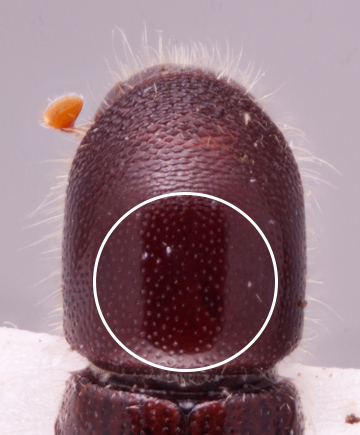 ; posterolateralposterolateral:
; posterolateralposterolateral:
relating to end of the side part/portion
 margin carinate to interstriaeinterstria:
margin carinate to interstriaeinterstria:
longitudinal spaces along the elytra between the striae, which is not as<br />
impressed and bear smaller punctures.
 5; declivitydeclivity:
5; declivitydeclivity:
downward slope of either the pronotum or elytra
 appearing flat when viewed laterally, weakly depressed below laterallateral:
appearing flat when viewed laterally, weakly depressed below laterallateral:
pertaining to the side
 margins; and basalbase:
margins; and basalbase:
point or edge closest to the body; opposite of apex half of interstriaeinterstria:
half of interstriaeinterstria:
longitudinal spaces along the elytra between the striae, which is not as<br />
impressed and bear smaller punctures.
 2 with 2−3 small tuberclestubercle:
2 with 2−3 small tuberclestubercle:
a small knob-like or rounded protuberance of the exoskeleton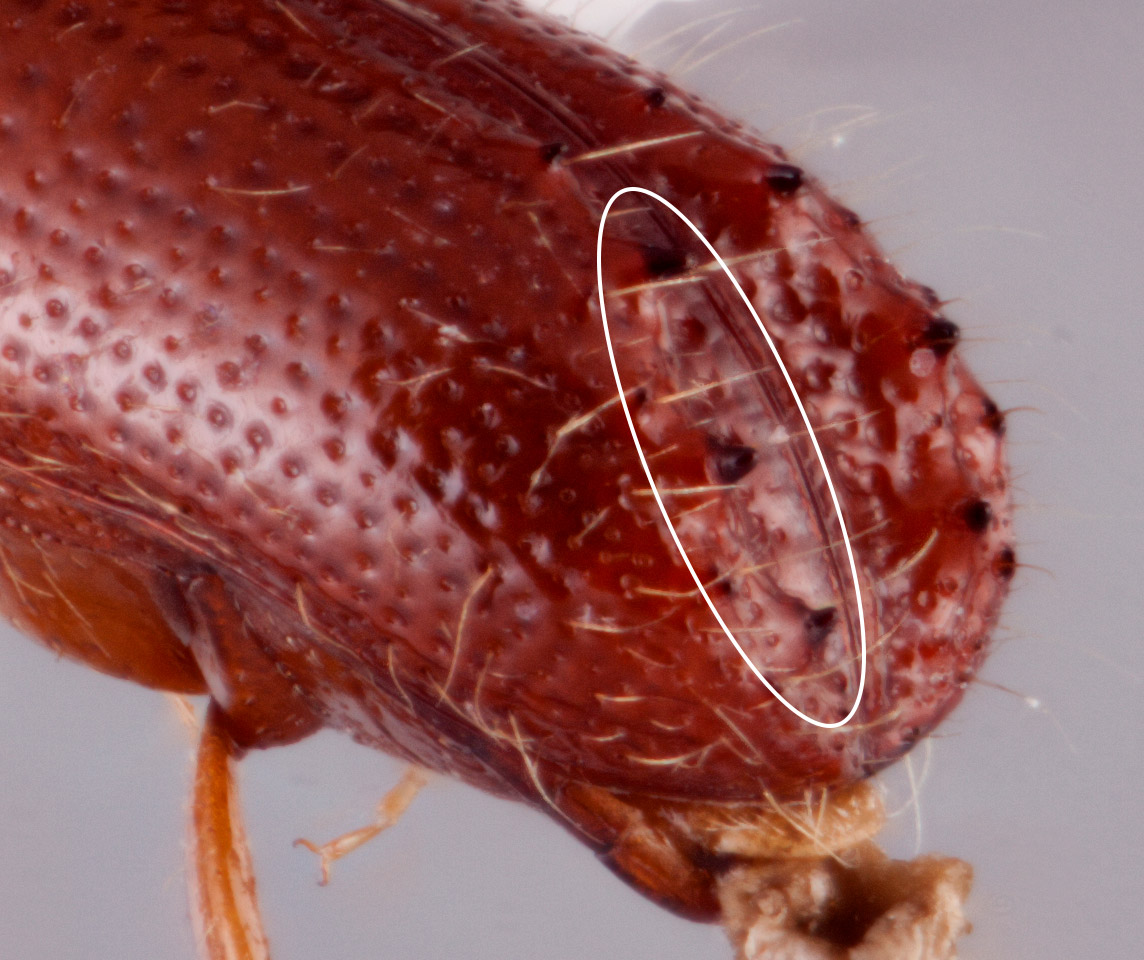 .
.
May be confused with
Anisandrus eggersi, A. feronia, and A. improbus
Distribution
India (Uttarakhand), Nepal
Host plants
recorded only from Berberis (Berberidaceae) (Beeson 1930Beeson 1930:
Beeson CFC. 1930. The biology of the genus Xyleborus , with more new species. Indian Forest Records 14: 209-272.)
DNA data
specimens not available for sequencing

